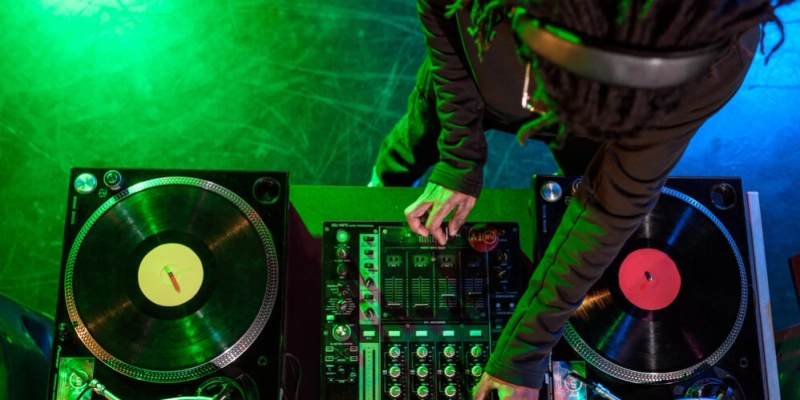Are you familiar with the concept of rap beats music sampling, but unsure of its intricacies? Don't worry, we're here to provide you with a clear understanding of how it works and how to define it. Music sampling is the process of taking a portion of an existing sound recording and incorporating it into a new composition. In rap and hip-hop music, producers use sampling to create unique and diverse beats by manipulating and layering different sounds together. With the rise of digital technology, music sampling has become more accessible and easier to experiment with. If you want to explore the world of rap beats and music sampling, let's dive in!
What is rap beats music sampling?
Music sampling is a technique widely used in modern music production, particularly in rap and hip-hop genres. It involves taking a small portion of an existing sound recording, such as a melody or a drumbeat, and incorporating it into a new musical creation. The process often involves looping and layering the sampled material with newly recorded music to create a unique sound.
Music sampling has become more accessible in recent years, thanks to digital samplers and software programs like Fruity Loops, Logic, and Ableton. These tools enable producers to easily manipulate and rearrange samples, creating entirely new compositions.
The history of music sampling dates back to the early days of hip-hop, where DJs would loop sections of funk and soul tracks to create breakbeats. Over time, sampling became a central aspect of hip-hop production, with artists like Grandmaster Flash and Public Enemy using samples to create politically charged and socially conscious music.
In the 1990s, sampling faced legal challenges as copyright holders sought to protect their intellectual property. This led to the introduction of sample clearance laws, which required producers to obtain permission and pay fees for using copyrighted material. Despite these challenges, music sampling remains a powerful tool for creating new and innovative music.
Music Sampling - a brief history
Sampling is a musical technique that originated from contemporary genres like EDM and hip hop, but its roots can be traced back to the early days of audiotapes in the 1940s, during the musique concrète movement. The Beatles were also early experimenters with music sampling, incorporating it into their 1968 track "Revolution No. 9."
In the 1960s, Jamaican dub reggae artists began using vocal samples to create their tracks, while American hip-hop producers and rappers in the 1970s popularized the use of music sampling and looping. It's worth noting that the influence of funk and rock can be seen in many samples, with sources often coming from the late 1960s and 1970s. Even contemporary producers like DJ Shadow and Timbaland frequently pull their samples from disparate sources spanning decades.
Now that we've learned a bit about the history of music sampling, let's explore how to sample music in a few simple steps.
Easy Steps to Sample Music
Simply having a computer, software, and audio files is no longer enough to sample music in this digital era.
Step 1: Choose a digital audio workstation (DAW)
There are numerous paid digital audio workstations (DAWs) available for music sampling, including Steinberg Cubase, Pro Tools, Logic, Fruity Loops, and Ableton. However, if you're a beginner just starting with music sampling, it's best to choose a free program such as Pro Tools First, Cubase LE, Ableton Live Lite, or GarageBand.
Step 2: Import your music file
For optimal fidelity, the WAV or AIFF file formats are commonly used in music sampling. However, if you prefer a different music format, you can also choose from an MP3 or AAC file.
Step 3: Cut out an excerpt of the audio file
To sample music, you will need to extract a specific portion from a full song. For instance, if you want to create a groove with your sample, look for a section that has a repeating rhythm that drives the beat forward.
Step 4: Loop the sample
All digital audio workstation (DAW) programs have a looping function available. You can learn how to enable this feature either by consulting the manual or asking an expert. If you prefer not to loop the sample, you can instead drop it at specific points in the song. In this scenario, you will need to create a groove using an instrument.
Step 5: Repeat according to your need
Hip-hop and EDM songs typically contain multiple samples, which producers layer to create a new sound.
A common question regarding music sampling is whether it is legal or not. The answer is that it can be legal, but only under specific conditions. When a song is sampled, it becomes the intellectual property of the composer and copyright owner. To avoid any legal issues, it's important to obtain sample clearance from the copyright holder or the original artist.
Alternatively, you can avoid any potential legal hassle by simply purchasing rap beats instead of sampling them yourself.
Buy Rap Beats Online
If you want to buy rap beats online, it's essential to find trustworthy artists. At JBZ Beats, you can choose from a vast selection of high-quality beats from producers all over the world. Don't wait any longer, visit our official website and start shopping now!
Source URL: https://www.jbzbeats.com/


